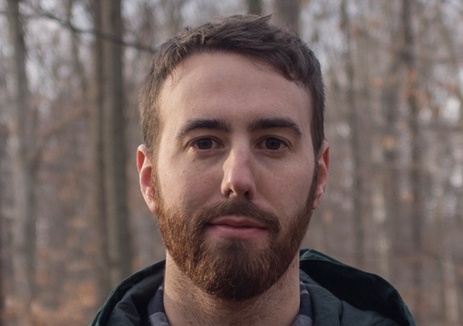Fish & Cat (dir. Shahram Mokri) is a 130-minute Iranian film that takes place in a single shot.
I’d assumed, before arriving in the theater at ND/NF this week, that Fish & Cat would suffer certain limitations of its gimmicky continuous filming: not least of which was the opportunity for error on the part of cast and crew alike. But primarily I was concerned that such a movie would be boring in favor of its technique. The plot would probably be small in scope with a requisite linear narrative.
Fortunately, I was wrong. Fish & Cat is complicated and weird. It’s set up within cinematic traditions of American horror films: rumors of restaurants deep in the woods serving human flesh; a university kite-flying competition at the campsite; creepy old men wandering around the woods carrying a bag of rotting meat. The camera follows one character at a time as they wander the forest and campsite, and jumps between characters as they cross paths like I imagine fleas leap between passing dogs.
The story is non-linear, but also (sort of) linear: time passes normally for the characters but the film loops back on itself, via new characters, to moments already shown. In essence, this is Rust Cohle’s “time is a flat circle” theory in action. It feels like Primer at times, except without time travel.
For example: Kambiz’s dad drops him off at the campsite. Kambiz carries his kite and equipment looking around for a girl he likes, Mina. As Kambiz wanders through the campsite, he passes Parviz, the organizer of the event. The camera then follows Parviz as he looks through his backpack, notices something missing, and walks over to some friends asking about his missing kite lights. Parviz runs into Mina, who gradually makes her way back over to Kambiz, where they have a flirty exchange. Almost an hour later (by my clock), we return via Parviz to that original moment with Kambiz, and this time the camera goes with Kambiz to his campsite instead of with Parviz to his backpack.
But there have been no camera cuts; we have been with characters the entire time (an alibi, if you will, that there has been no opportunity for time to have gone backwards or slowed down in the world of the film). This superb cinematography was executed by Mahmud Kalari (A Separation).
It’s difficult to defend how this complicated narrative works, and at some moments in the film it doesn’t. There are plot points left unexplained, extended narrative arcs that don’t go anywhere. But the spiderweb structure (around and around, and often stuck) is sort of liberating as a viewer, once you give up trying to track it. Fish & Cat gives its audience the opportunity to experience moments again and again, through multiple perspectives and with different contexts.
Fish & Cat will likely not get US distribution for a variety of reasons, which is a shame because I think the film could find an audience here. Its rural setting, conflation of myth and reality, and overwhelmingly creepy tone set Fish & Cat apart from other similar low-budget films, and Mokri is a real emerging talent. I’m always excited to see new films out of Iran -- particularly because of how few Iranian movies actually screen here (Mokri was unable to attend his film’s screening at ND/NF in New York because of how difficult it is for an Iranian to travel to the US). But Fish & Cat is different from what I’ve seen of other contemporary Iranian cinema, and I’m excited to see where Mokri goes next.
Watch the trailer here.
Eliza Rosenberry was a founding e-board member of NUFEC and graduated from Northeastern in 2011. She currently lives in Brooklyn and does book publicity for Blue Rider Press. Find her on Twitter @elizarosenberry.












 RSS Feed
RSS Feed
